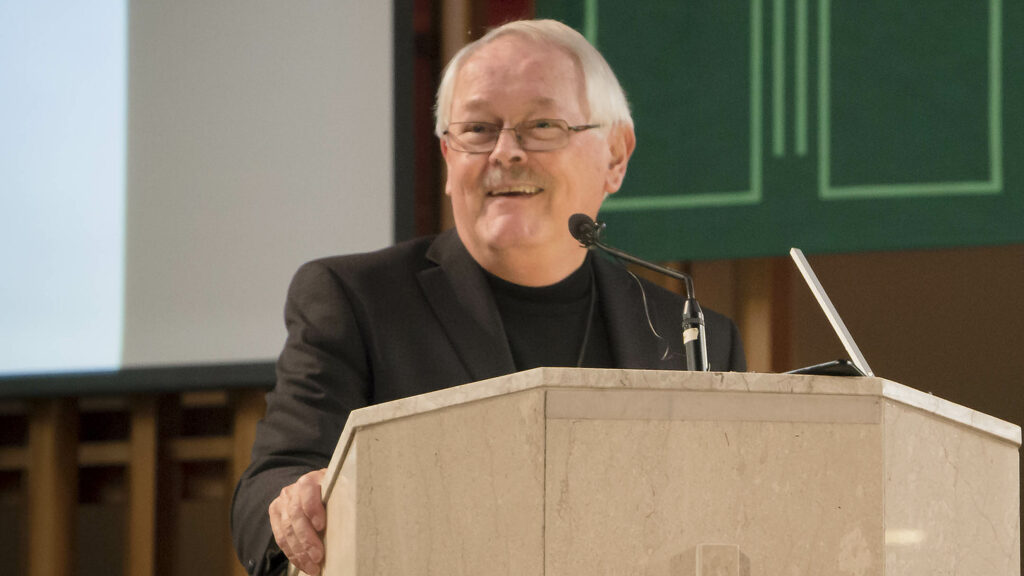No community should botch its deaths. The renowned anthropologist, Mircea Eliade, suggested this and its truth applies to communities at every level. No family should send off a member without proper reflection, ritual, and blessings.
On December 26th, 2018, the family of art and the family of faith lost a cherished member. Sr. Wendy Beckett, aged 88, famed art critic, committed woman of faith, and nurturing friend to many, died. Since 1970, Sr. Wendy had been living as a consecrated virgin and hermit on the grounds of a Carmelite convent in England, praying for several hours a day, translating religious tracts, and going to daily Eucharist.
Early on, after choosing this way of life, she began to study art history, started writing articles for magazines, and published the first of more than 30 books on art. In 1991, she did a short BBC documentary on television and was an immediate hit with a wide audience. She soon began to host her own BBC show, Sister Wendy’s Odyssey, which was so popular it sometimes attracted one quarter of the British television audience.
Anyone who watched her programs was soon taken by three things: The absolute joy that was present in her as she discussed a piece of art; her capacity to articulate in a simple and clear language the meaning of a particular work of art; and her earthy appreciation of sensuality and the nude human body which she, as a consecrated virgin, could describe with a disarming appreciation.
All of those qualities (her joy, her simplicity of language, and her capacity to give the pure gaze of admiration to the nude human body) were what endeared her to her audience but also brought scorn from a number of critics. They mocked her simplicity of language, criticized her for not being more critical of the art she presented, and were put off by that fact that she, a consecrated virgin, could so comfortably discuss sensuality and the nude human body. They found it difficult to digest that this pious woman, a consecrated virgin, clad in a traditional religious habit, sporting thick glasses and buck-teeth, could be so much at ease with sensuality. Robert Hughes, of Time magazine, once mocked her as a “relentlessly chatty pseudo-hermit with her signature teeth” whose observations were “pitched to a 15-year-old” audience. Germaine Greer challenged her competence to describe erotic art given the fact that she was a consecrated virgin.
Sr. Wendy mostly smiled at these criticisms and countered them this way: “I’m not a critic”, she would say, “I am an appreciator”. As to her comfort with sensuality and the nude body, she would answer that just because she was committed to celibacy did not mean that she was not fully appreciative of human sensuality, sexuality, and the beauty of the human body – all of it.
There are of course different ways in which the unclothed human body can be perceived, and Sr. Wendy was a smiling, unapologetic appreciator of one of them. An unclothed human body can be shown as “nude” or as “naked”. Good art uses nudity to honor the human body (surely one of God’s great masterpieces) while pornography uses nakedness to exploit the human body.
Sr. Wendy was also unapologetic about the fact that her consecrated virginity did not disprivilege her from appreciating the erotic. She was right. Somewhere we have developed the false, debilitating notion that consecrated celibates must, like little children, be protected from the erotic so that even while they’re supposed to be doctors of the soul they should be shielded from the deep impulses and secrets of the soul. Sr. Wendy didn’t buy that. Neither should we. Chastity is not intended to be that kind of naiveté.
Full disclosure: I had a personal link to Sr. Wendy. Many years ago, when I was young and still searching for my own voice as a spiritual writer, she sent me a large, beautifully- framed, print of Paul Klee’s, famous 1923 painting, Eros. For the past 29 years it has hung on a wall behind my computer screen so that I see it every time I write and it has helped me understand that it’s God’s color, God’s light, and God’s energy that inform erotic longing.
In 1993, while visiting the monastery where Sr. Wendy lived, I had the opportunity to go out to a restaurant with her. Our waiter was initially taken aback by her traditional religious habit. With some trepidation he timidly asked her: “Sister, might I bring you some water?” She flashed her trademark smile and said: “No, water’s for washing. Bring me some wine!” The waiter relaxed and much enjoyed bantering with her for the rest of the meal.
And that was Sr. Wendy, an anomaly to many: a consecrated virgin discoursing on eros, a hermit but famous art critic, and an intellectually brilliant woman who befuddled critics with her simplicity. But, like all great minds, there was a remarkable consistency at a deeper level, at that place where the critic and the appreciator are one.

